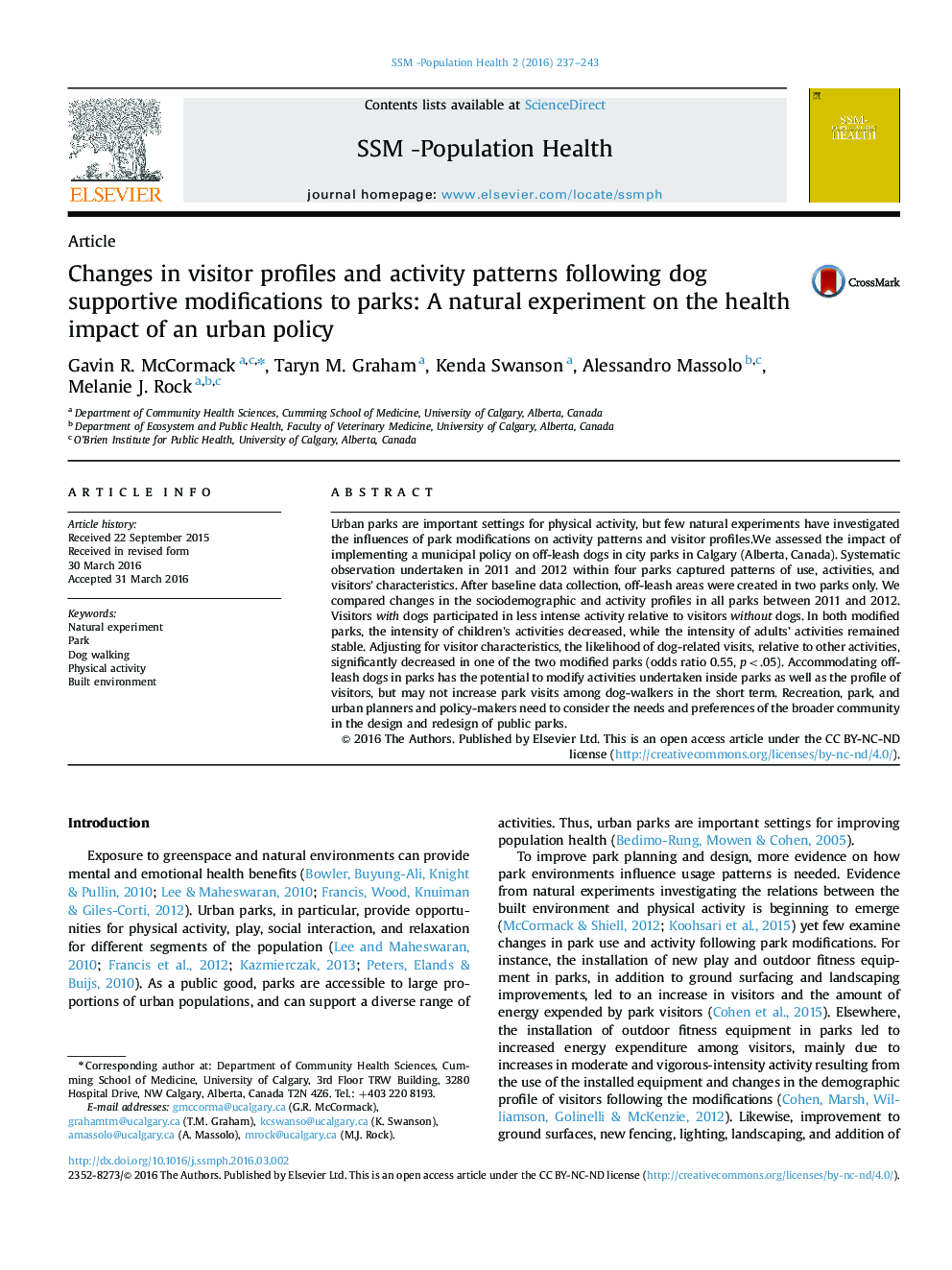| Article ID | Journal | Published Year | Pages | File Type |
|---|---|---|---|---|
| 1092327 | SSM - Population Health | 2016 | 7 Pages |
•New off-leash areas in existing parks may not increase visits among dog-walkers.•Accommodating off-leash dogs in parks may modify other park activities.•Creating off-leash areas in parks may lower the intensity of children׳s activity.•Park visitors with dogs participate in less intense activity than those without dogs.
Urban parks are important settings for physical activity, but few natural experiments have investigated the influences of park modifications on activity patterns and visitor profiles.We assessed the impact of implementing a municipal policy on off-leash dogs in city parks in Calgary (Alberta, Canada). Systematic observation undertaken in 2011 and 2012 within four parks captured patterns of use, activities, and visitors׳ characteristics. After baseline data collection, off-leash areas were created in two parks only. We compared changes in the sociodemographic and activity profiles in all parks between 2011 and 2012. Visitors with dogs participated in less intense activity relative to visitors without dogs. In both modified parks, the intensity of children׳s activities decreased, while the intensity of adults’ activities remained stable. Adjusting for visitor characteristics, the likelihood of dog-related visits, relative to other activities, significantly decreased in one of the two modified parks (odds ratio 0.55, p<.05). Accommodating off-leash dogs in parks has the potential to modify activities undertaken inside parks as well as the profile of visitors, but may not increase park visits among dog-walkers in the short term. Recreation, park, and urban planners and policy-makers need to consider the needs and preferences of the broader community in the design and redesign of public parks.
